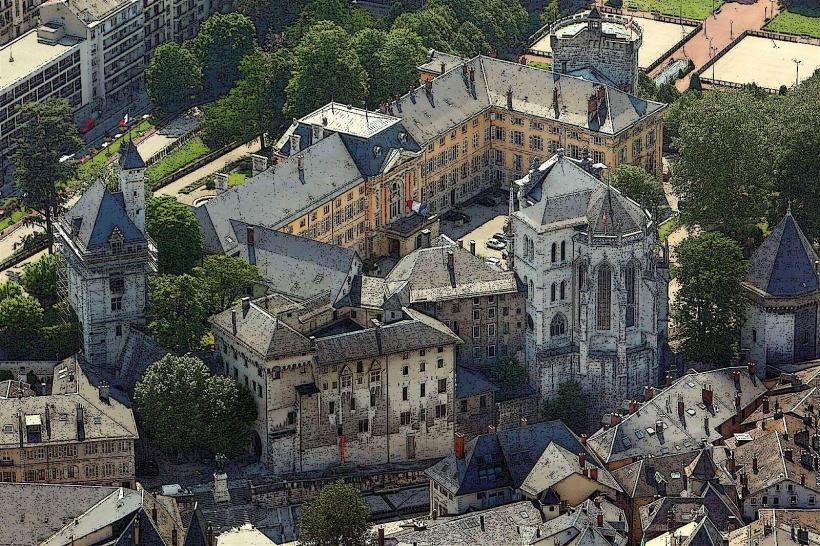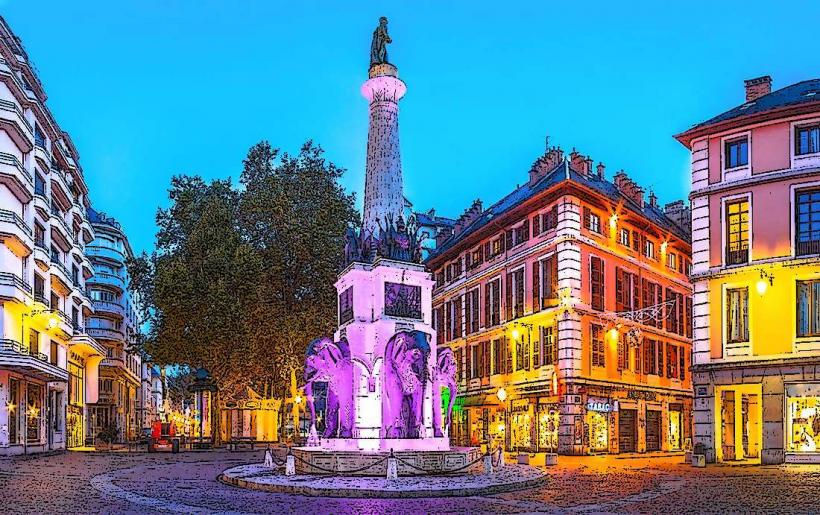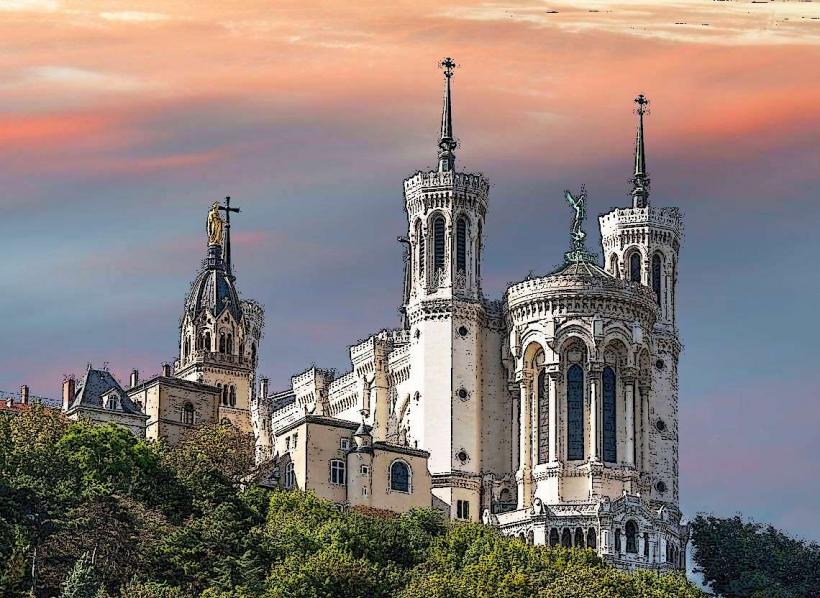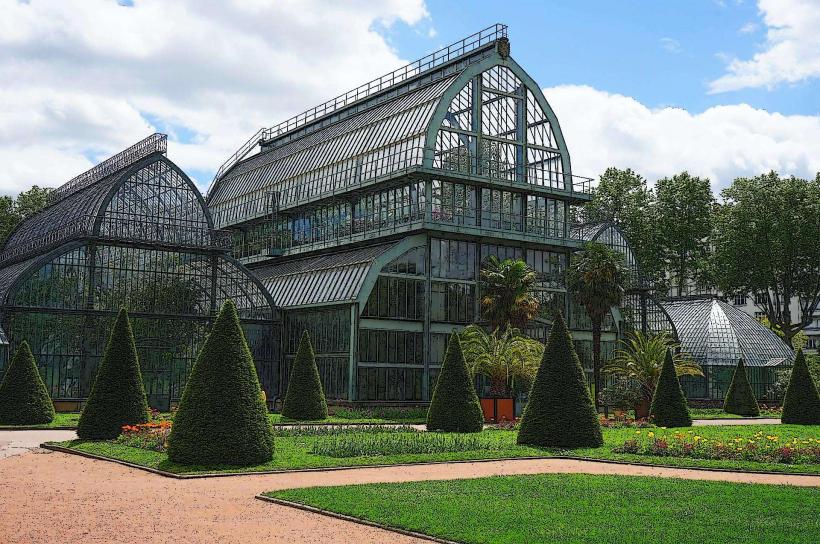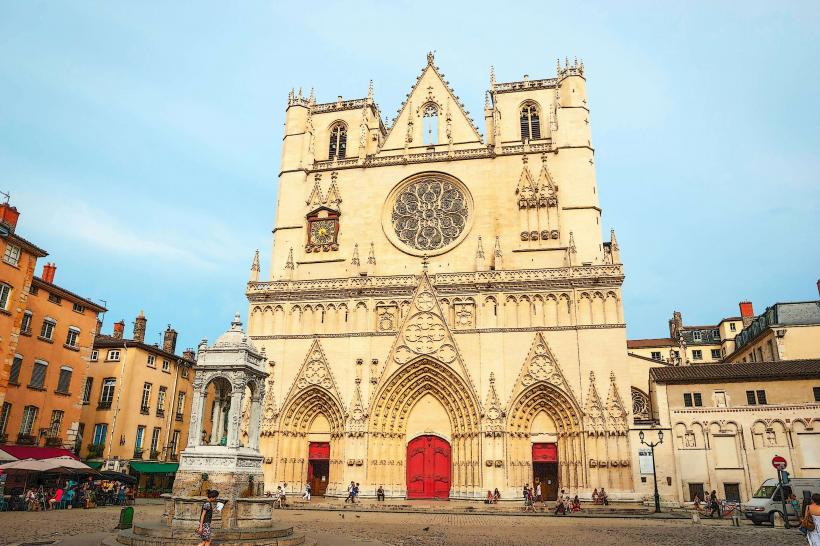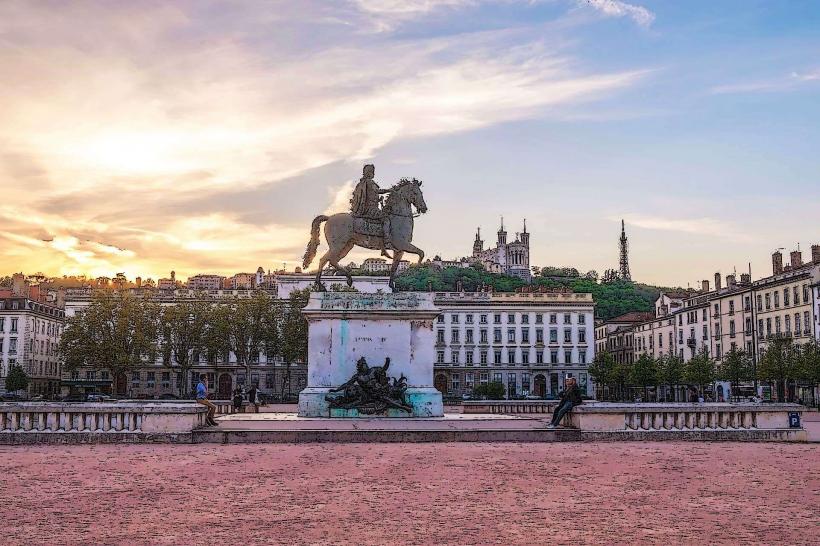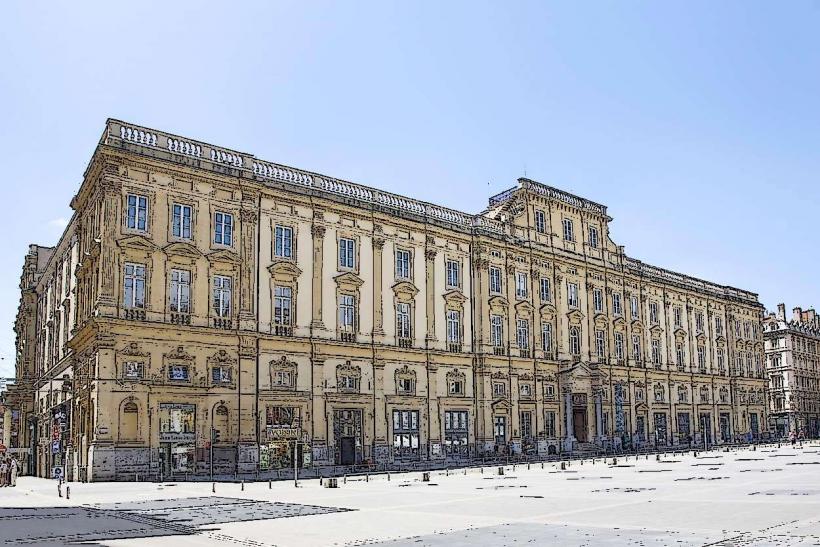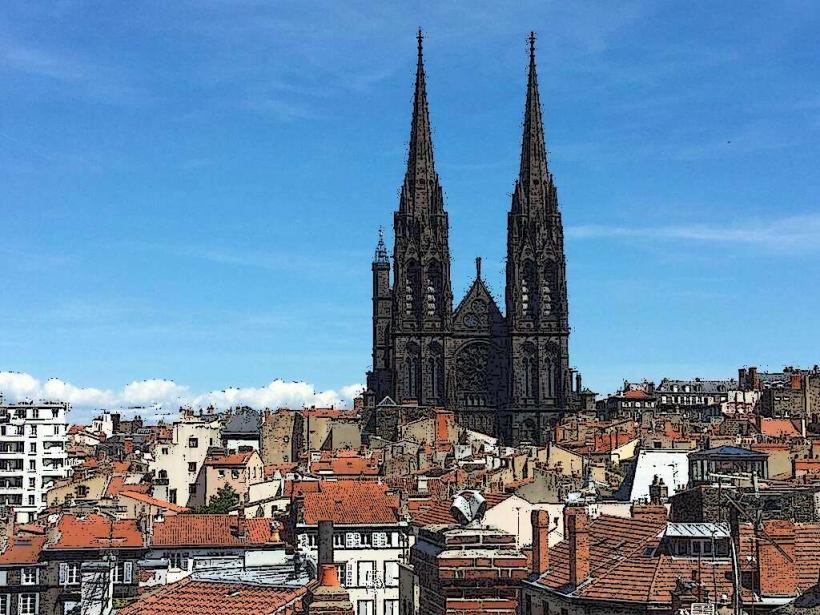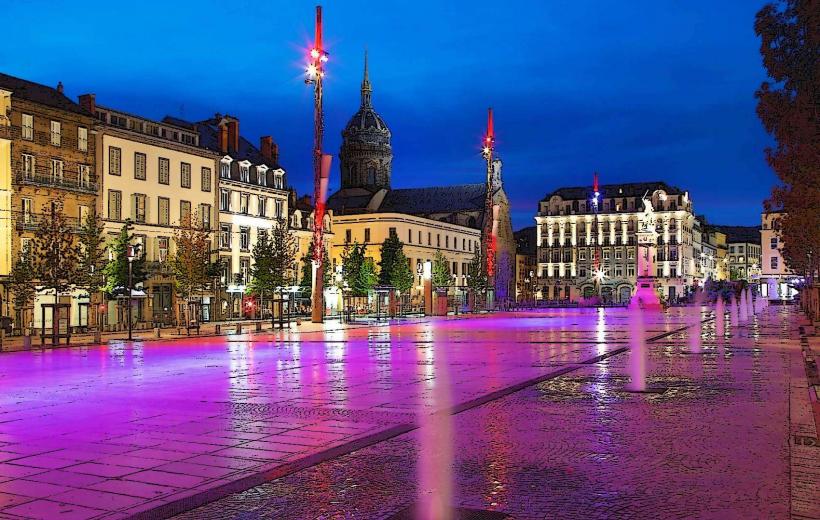Information
Landmark: Vieux LyonCity: Lyon
Country: France
Continent: Europe
Vieux Lyon (Old Lyon) is the historic district of Lyon, France, and is one of the city’s most charming and well-preserved neighborhoods. Recognized as a UNESCO World Heritage site since 1998, Vieux Lyon is renowned for its Renaissance-era architecture, narrow cobbled streets, and vibrant atmosphere that transports visitors back in time.
1. Overview
- Location: Vieux Lyon is situated along the Saône River, at the foot of the Fourvière Hill where the Basilica of Notre-Dame de Fourvière stands. It is the historical center of the city, and its well-preserved buildings showcase the architectural splendor of the Renaissance period.
- Historical Significance: Vieux Lyon is one of the largest Renaissance districts in Europe and was once the center of silk weaving during the 16th and 17th centuries. It was a vital hub of commerce, culture, and religion, influencing the growth of Lyon as one of France’s major cities.
2. Architecture
Vieux Lyon boasts a wealth of architectural styles, most notably Renaissance and Gothic influences, with structures that feature intricate stonework, ornate facades, and decorative details. Key features include:
- Renaissance Buildings: The district is known for its Renaissance architecture, which features colonnaded courtyards, decorative windows, and painted facades. Many of the buildings have been carefully preserved, showcasing the opulence of the era.
- Traboules: One of the most unique aspects of Vieux Lyon is its network of traboules—hidden passageways that run through the buildings, connecting streets and courtyards. These passages were originally used by silk merchants to transport their goods and provide shelter from the elements. Visitors can explore these secret pathways and discover their historical significance.
- Gothic Elements: In addition to Renaissance buildings, Vieux Lyon features Gothic-style churches, such as Saint-Jean Cathedral, with pointed arches, ribbed vaults, and flying buttresses.
3. Key Attractions
Saint-Jean Cathedral (Cathédrale Saint-Jean-Baptiste de Lyon): This Gothic cathedral is one of Lyon’s most significant religious buildings. It features stunning stained-glass windows, a remarkable astronomical clock, and an impressive façade. The cathedral is located in the heart of Vieux Lyon, and its tower offers panoramic views of the district.
Traboules: These covered passageways are a hallmark of Vieux Lyon. They wind their way through courtyards and buildings, providing a glimpse into the life of past centuries. Many of these traboules are open to the public, and several can be accessed through guided tours.
Place du Gouvernement: A beautiful square in Vieux Lyon, this area is home to charming cafes, restaurants, and shops. It provides a relaxing space to enjoy Lyon’s culinary culture and people-watch.
Musée de la Marionnette (Puppet Museum): Lyon has a long history of puppetry, and this museum explores the city’s connection to puppet theatre. The museum is located in a historic building and features exhibits on various puppetry styles, including the famous Guignol puppet.
Le Petit Musée de la Poupée (The Little Doll Museum): A small museum dedicated to dolls and their history, showcasing examples from different time periods and regions.
Maison du Crible: One of the most famous buildings in the district, this house features a unique crible facade—a decorative design of small holes in the stone, which was once used as a silk weavers’ house.
4. The Traboules of Vieux Lyon
- What are Traboules?: Traboules are narrow, covered passageways that run between buildings. They were originally built in the 16th century and were used by silk weavers to transport goods more efficiently. These passageways also served as a means of escape during times of conflict or siege. Many of these traboules remain today and are accessible to the public.
- Exploring the Traboules: Visitors can discover the traboules on foot, and several of them are open to the public. Some traboules are in private buildings, while others are part of the neighborhood’s historical sites. They offer an intriguing look at the city’s past and its commercial and social life.
5. Culinary Delights
- Bouchons Lyonnais: Vieux Lyon is famous for its traditional Lyonnais restaurants known as bouchons. These cozy eateries offer regional specialties, including dishes like quenelles (a type of dumpling), andouillette (a sausage), and salade lyonnaise (a salad with bacon, croutons, and poached eggs).
- Pastries and Sweets: Lyon is also known for its pastries, including pralines (candied almonds) and tarte à la praline (a sweet tart filled with praline). Many bakeries in Vieux Lyon serve these local treats.
- Les Halles de Lyon Paul Bocuse: While not located directly in Vieux Lyon, this covered market is nearby and is a must-visit for food lovers. It’s named after the famous French chef Paul Bocuse and offers an array of fresh produce, gourmet products, cheeses, meats, and pastries.
6. Festivals and Events
Vieux Lyon is not just about history and architecture—it’s also a hub of cultural events throughout the year:
- Fête des Lumières (Festival of Lights): Lyon’s annual Festival of Lights takes place in December, and Vieux Lyon is one of the main areas of celebration. The streets and buildings are illuminated with artistic light displays, making the entire district come alive with color and creativity.
- Lyon’s Silk Heritage Festival: As a district with a rich silk-weaving tradition, Vieux Lyon hosts events celebrating its historical connection to the silk industry, including exhibitions, workshops, and demonstrations of traditional weaving techniques.
7. How to Explore Vieux Lyon
- Walking Tours: The best way to explore Vieux Lyon is on foot, as the district’s narrow streets, hidden passageways, and historical buildings are best discovered by walking. Many walking tours are available, which offer a deeper understanding of the district’s history, architecture, and culture.
- Guided Tours: Several guided tours, including traboule tours, historical walking tours, and food tours, are available. These tours provide insightful commentary and local expertise.
- Public Transport: Vieux Lyon is accessible by Lyon’s public transport system, including the metro (Line D), which has a station at Vieux Lyon – Cathédrale St-Jean.
8. Conclusion
Vieux Lyon is a treasure trove of historical charm, architectural beauty, and culinary delights. Whether you’re exploring its hidden traboules, enjoying the local cuisine, or simply strolling through its picturesque streets, this district is a must-visit destination for anyone traveling to Lyon. Its unique atmosphere and rich history make it one of France’s most fascinating historic districts.

